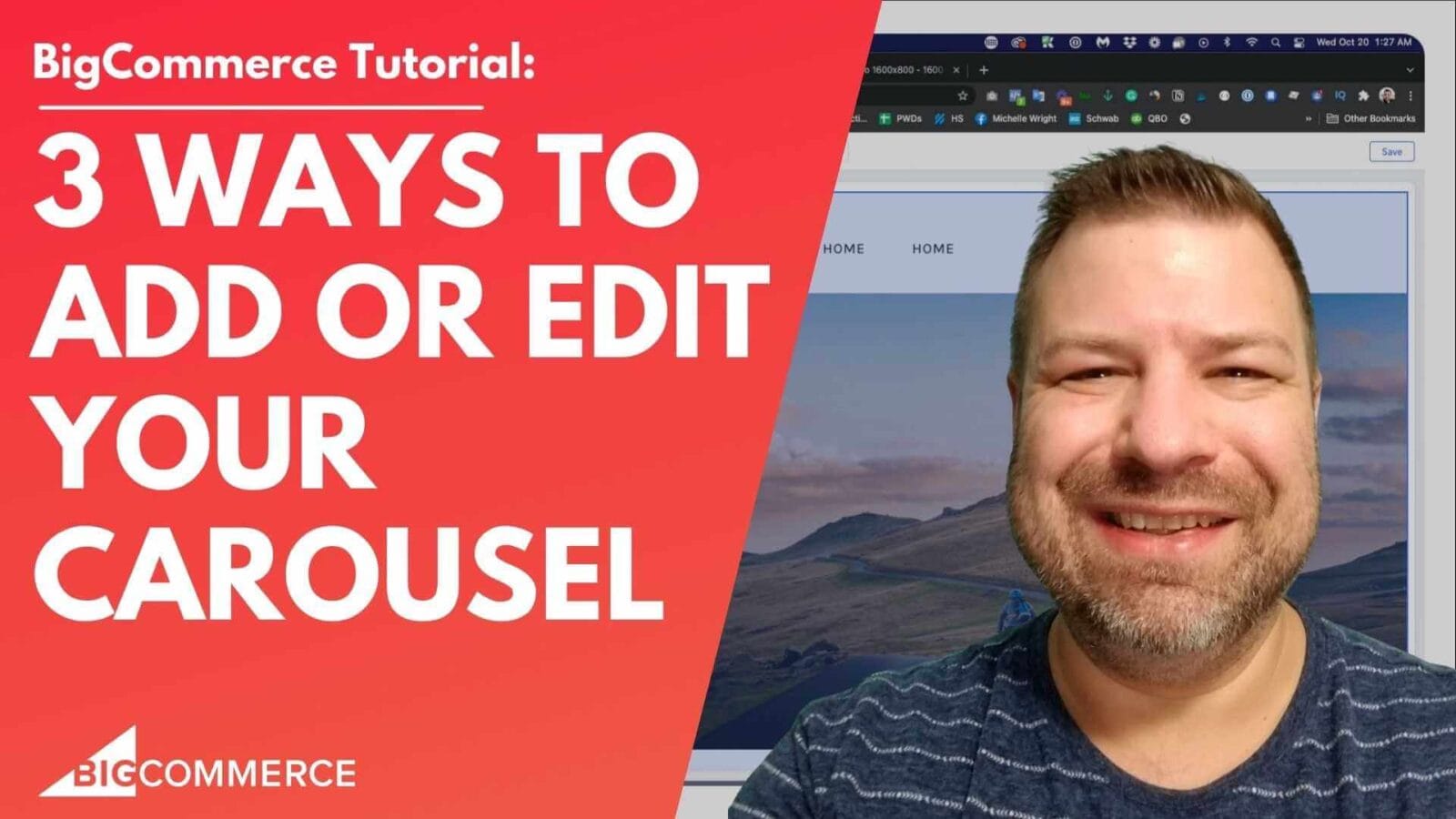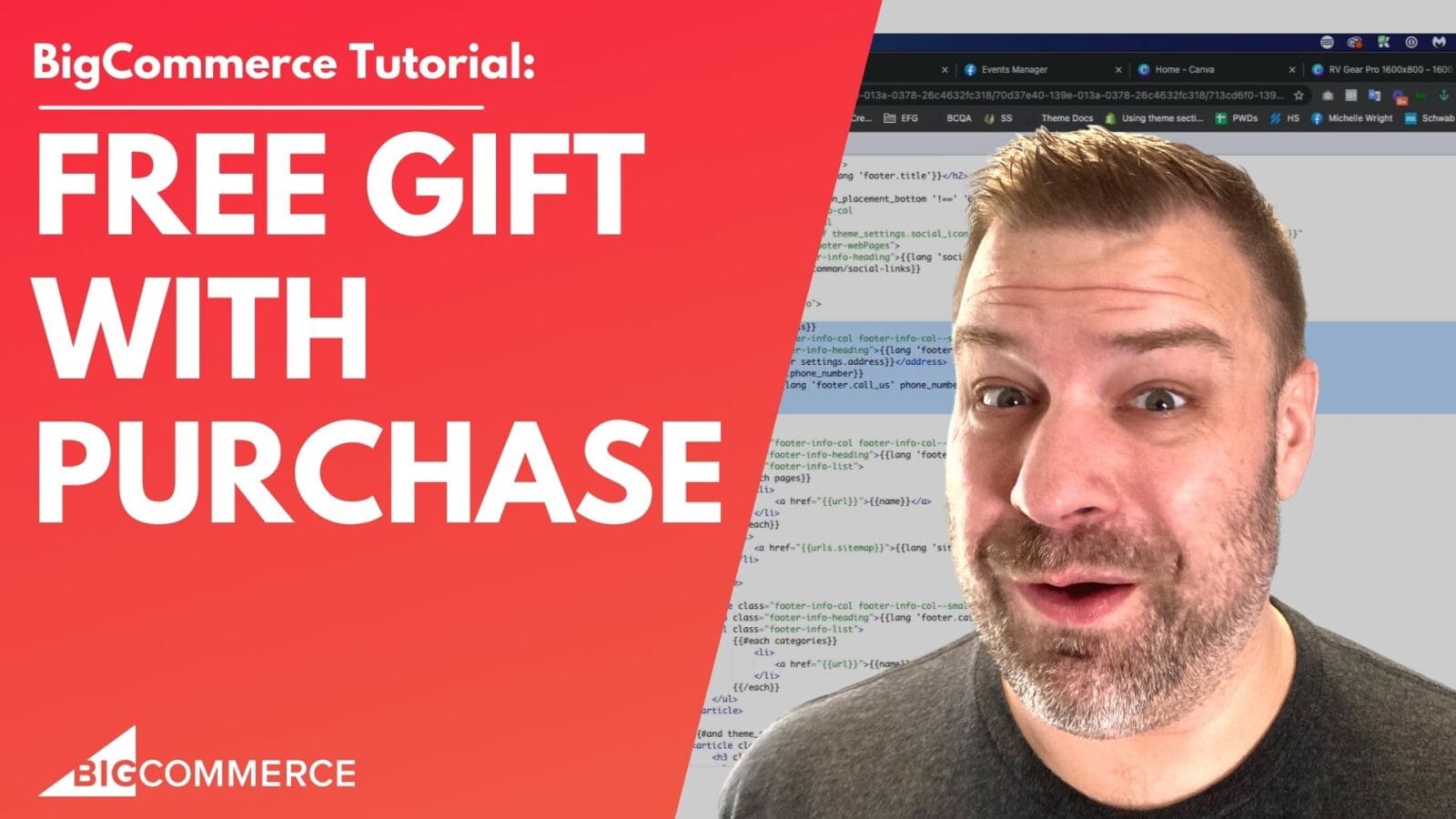(00:01)
Hey there! Are you looking to change your theme in BigCommerce? You’re in luck! In this video, I’m going to show you how to do that.
Before we get started, my name is Cal. I’m a developer and a store owner just like you, and I run the E-commerce Growth Community, a free community for store owners. I’ll leave a link in the description right under this video if you’re interested in joining.
Let me share my screen, and I’ll show you how easy this is.
(00:23)
First of all, if you’re on a super old BigCommerce store—like prior to 2016—and you’re on Blueprint, you should know that switching to a BigCommerce Stencil theme is a no-go back situation. That just means that if you’re upgrading from Blueprint to Stencil, you won’t be able to downgrade back to Blueprint.
For everyone else (every store launched since 2016), you’re already on Stencil, so moving between Stencil themes is super easy. And I’m going to show you how to do that.
(00:55)
In the backend of your store, if you go to Storefront > Themes, you’ll see your current active theme here. You’ll also see a bunch of inactive themes, which you can easily turn on at any point, and you’ll see a button here to go to the Marketplace.
In the Marketplace, you can view even more themes. You can filter to see free themes or paid ones. If you want to apply a paid theme to your store, you just click on it and buy it. Once you’ve purchased it, it’ll be available to apply to your store.
(01:28)
Installing a free theme works the same way, except you don’t have to pay for it. For example, if I want to install the Lifestyle Default theme, I can just click “Add Theme.” It’ll ask if I want to apply it now or later. If you apply it now, it’ll go live immediately, but if you choose to apply later, it’ll be saved for later activation.
(02:00)
Once you’ve added the theme to your store, it’ll show up under Themes. You’ll see it listed as an inactive theme. One cool feature in BigCommerce Stencil is that you can preview themes before activating them.
For example, here’s my current store—this is just a demo store, so it’s pretty empty. Now, if I want to see how it would look on a different theme, say Cornerstone, I can click on Cornerstone and select Preview instead of Apply. The preview will show your store’s data within the new theme.
(02:32)
You can also go into Customize for any inactive theme to tweak it before making it live. For instance, if you choose to customize the Cornerstone theme, you can adjust the colors, drag widgets, and generally get it ready before you launch it.
(03:03)
Let’s go back and look at the Lifestyle theme I just downloaded. I can click on Customize, change things like the primary color, and make other adjustments.
If someone, like my company, is building a custom theme for you, we can build and upload it to your store without making it live right away. It’ll appear in your list of inactive themes, and you can preview it just like the default ones.
(04:12)
Switching to a new theme is as simple as clicking Apply. For example, I’ll activate the Cornerstone theme right now. It may take a few seconds, but once it’s active, my whole front-end will now reflect the base Cornerstone layout.
If you change themes accidentally or don’t like the new one, don’t worry—you can always go back. Your previous theme will be listed under inactive themes, and you can reactivate it with just a click.
(04:55)
Now I’m back to my original theme, and everything looks as it did before. It’s not risky to change themes as long as you’re on Stencil (unless you’re migrating from Blueprint to Stencil—that requires more care).
(05:32)
Here’s my advice: when considering a pre-made theme, be sure to view their demo store. You’ll get a URL for their demo store, which you can run through speed testing tools like Google’s PageSpeed Insights, Pingdom, or GTmetrix.
Also, compare its performance to BigCommerce’s Cornerstone theme, which is typically faster. This will help you understand if the theme you’re considering is slower, and if that’s okay for your needs.
(06:39)
Many third-party themes come with extra features, which can add overhead. You should know what you’re getting into in terms of speed. If you’re just starting and need something affordable, a slightly slower theme might be okay. But do check it first.
By now, you should know how to:
Find a new theme in the Marketplace,
Change themes,
Preview themes before making them active, and
Customize themes in the Customizer.
If you’re just getting started, be sure to check out my course. Leave a comment below and let me know what you’re stuck on—I make these videos to help you out! The more you tell me, the more I can assist.
Thanks so much!


